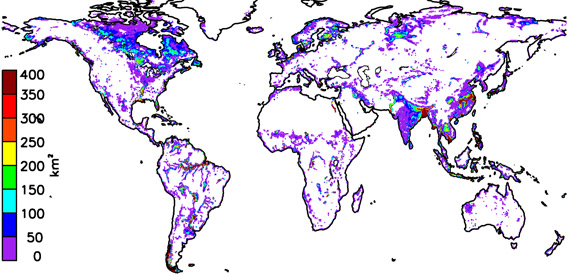
Map of extent of global wetlands. Courtesy of Prigent et al 2012. Click image to enlarge.
Global wetlands declined by six percent between 1993 and 2007 due to conversion for agriculture, drainage, and water diversion, reports a new satellite-based assessment published by European researchers in Geophysical Research Letters.
The study, which tracked changes in wetland extent on a worldwide-scale through seasonal and year-to-year fluctuations (e.g. El Niño events), found wetland loss was the greatest in the tropics and sub-tropics, where population growth and agricultural expansion is the greatest.
The results are significant because wetlands store large amounts of carbon in their soils and are often an important refuge for biodiversity.
Other research has shown that wetland loss — especially in Malaysia and Indonesia — has continued since 2007. Plantation development for palm oil and pulp and paper production are key drivers of wetland loss in Southeast Asia.
CITATION: Prigent, C., F. Papa, F. Aires, C. Jiménez, W. B. Rossow, and E. Matthews. Changes in land surface water dynamics since the 1990s and relation to population pressure. Geophys. Res. Lett., doi:10.1029/2012GL051276, in press (2012).
Related articles







